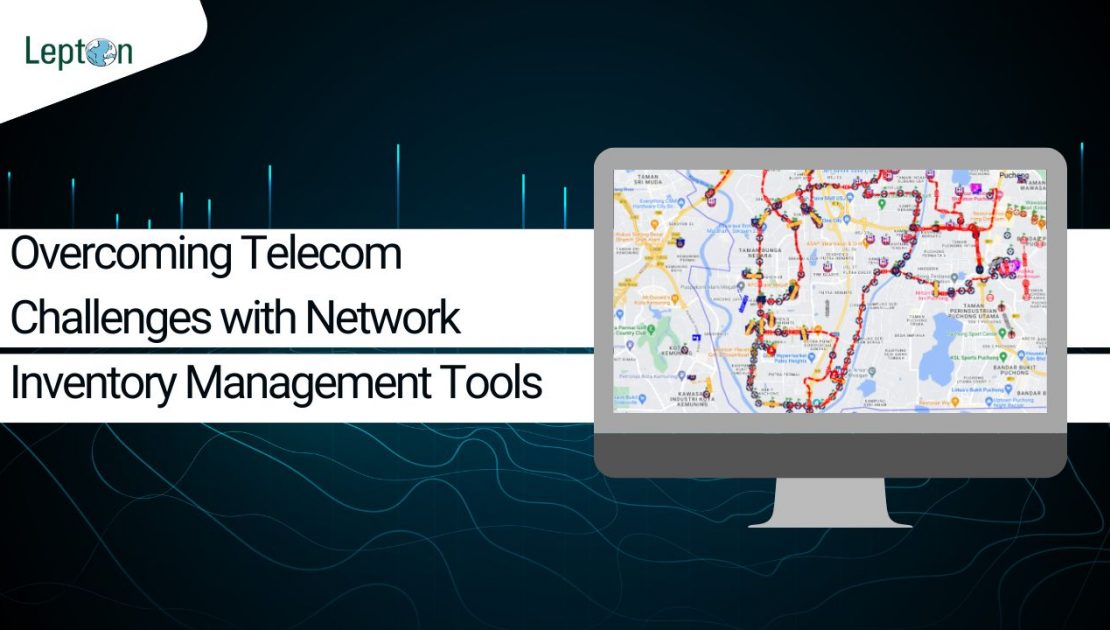The global telecom sector is undergoing rapid transformation. From the rollout of 5G and the rise of fiber-optic infrastructure to the increasing adoption of IoT and edge computing and smart cities projects, telecom operators are dealing with a complex, high-pressure environment that demands agility, accuracy, speed, and most importantly, a robust financial standing.
However, as networks expand and become more responsive to users’ demand, operators face an uphill task. These include decentralized systems that offer limited visibility across infrastructure, stakeholders with an over-reliance on manual processes, all of which can severely impact services and performance of an already overloaded network.
And this is where an automated network inventory management system has become a critical factor for telecom operators’ success. By providing a uniform, real-time visibility of active and passive network assets, these tools are enabling telecom companies to move on from reactive troubleshooting to proactive planning, management, and maintenance of the inventory.
But before we talk about how AI-led network inventory platforms like SmartInventory are modernizing the end-to-end asset management platform, let’s first dive into the major challenges the legacy method poses.
The Top Telecom Challenges in Managing Networks
As telecom infrastructure expands, maintaining full visibility and control over assets becomes increasingly difficult. Some of the most common challenges include:
Fragmented Data Sources and Systems: Network data is often spread across legacy tools, spreadsheets, and disconnected OSS/BSS systems, making it difficult to obtain a unified view.
Lack of Real-Time Network Insights: Without live visibility into the status and location of assets, identifying faults or bottlenecks becomes time-consuming and inefficient.
High Chances of Manual Errors: Inconsistent documentation and reliance on manual tracking introduce human errors that can lead to service disruptions or deployment delays.
Difficulty in Scaling and Maintaining Complex Networks: As networks scale with fiber rollouts and 5G deployment, legacy systems struggle to keep up with growing volumes and users.
These issues are common pain points that plague telecom inventory management systems today, which if left unaddressed, result in poor service quality, delayed rollouts, and rising operational expenses.
Why Legacy Methods Fail Telecom Operators?
Many telecom organizations still rely on outdated tools such as Excel spreadsheets, manual logs, and standalone inventory databases. These legacy methods no longer fit in today’s dynamic and frankly instant result-oriented telecom environment. Here’s why:
Manual Spreadsheets and Siloed Systems Are Outdated: When there is a heavy influx of data, manual processes can’t scale in an instant to handle the volume, velocity, and variety of data required for modern network operations.
No Integration with GIS or CRM Systems: Without integration, it’s impossible to map assets or correlate inventory with customer service data, making it all the more difficult for subsequent actions like equipment status and their services.
Slow Fault Resolution and Poor Visibility: Engineers waste time identifying issues due to disconnected data, leading to longer downtimes and loss of revenue.
Loss of Time and Increased Operational Costs: Duplication of effort, inefficient workflows, and miscommunication all contribute to higher operation expenses (OPEX).
What Is Network Inventory Management & Why It Matters?
Network inventory management in telecom refers to the end-to-end tracking, visualization, and centralized control of physical and logical network elements, including fiber cables, towers, ducts, switches, and IP addresses.
While it may sound synonymous with asset management, inventory management is more operational. Asset management focuses on the financial lifecycle of an asset (cost, depreciation, disposal), whereas inventory management ensures that the asset is discoverable, traceable, and ready for deployment or troubleshooting when a fault occurs.
With increasingly complex networks, operators need platforms that provide:
- Real-time visibility across all assets
- Integrated data from OSS, GIS, and CRM
- Centralized control for faster decision-making
With the right network inventory management system, telecoms can digitize asset tracking, planning, and performance, transforming the way infrastructure is managed and maintained. And this is where Lepton Software’s SmartInventory comes in.
Meet SmartInventory – A complete digital twin for telecom inventory
SmartInventory, a complete digital twin for wireline/wireless assets, gives you full autonomy to create and update telecom inventory for both active and passive equipment. Its utility is further enhanced by a unified mobile and web-based application which makes it easy to oversee the status of the inventory involved.
Designed with artificial intelligence capability with analytical dashboards, SmartInventory focuses on scalability, integration, and automation at its core to address both operational bottlenecks and strategic based scalability, if the requirement presents.
Key Features of SmartInventory:
- Centralized Live Asset Tracking
SmartInventory has a unified dashboard that tracks every asset, physical or virtual in real time. - GIS Integration for Geospatial Intelligence
Visualize the exact location and connectivity of assets, enabling faster fault isolation and better planning. Its other standout feature is that it easily integrates with the company’s existing ecosystem. - Future-Ready Scalability
Built to support growing network demands including 5G, FTTx, and smart city infrastructures. - Real-Time Reporting & Predictive Alerts
Gain actionable insights into inventory health and receive alerts for potential issues before they escalate.
How SmartInventory Benefits Telecom Operators?
By adopting SmartInventory, telecom operators can unlock tangible business value that covers operational, financial and customer satisfaction metrics.
- Accelerated Network Expansion and Rollout
SmartInventory reduces planning time and minimizes errors in fiber or tower deployments. This is especially beneficial for time bound projects and 5G rollouts whose assets do cost more owing to its relevancy. - Reduced Downtime with Better Fault Localization
You get to identify problem areas faster through location-based asset data and automated alerts. This reduces downtime and makes the entire process more efficient. - Streamlined Audits and Regulatory Compliance
Maintain up-to-date records with digital logs and automated documentation. It is especially important during compliance check and planned audits. - Lower Operational Expenditure (OPEX)
Optimize resource allocation, reduce rework, and improve inventory accuracy helps save companies a lot of capital upfront. - Improved Customer Experience
Minimize disruptions owing to complete centralization with more responsive operations aids in better service value and better brand recognition.
Conclusion
Every day new technology displaces the legacy process in place and telecom is no different. Today’s telecom networks are evolving too fast for outdated systems to keep up with the rising pressure to deliver high-speed, reliable connectivity with customer satisfaction metrics intact. In such cases, a complete overhaul is required with centralized asset and infrastructure management.
And, with Lepton Software’s SmartInventory, inventory management of your network becomes accessible and accountable with artificial intelligence capabilities and predictive intelligence.
So, if you’re looking to optimize your telecom operations with modernized solutions, check out SmartInventory.
Request a demo today!

